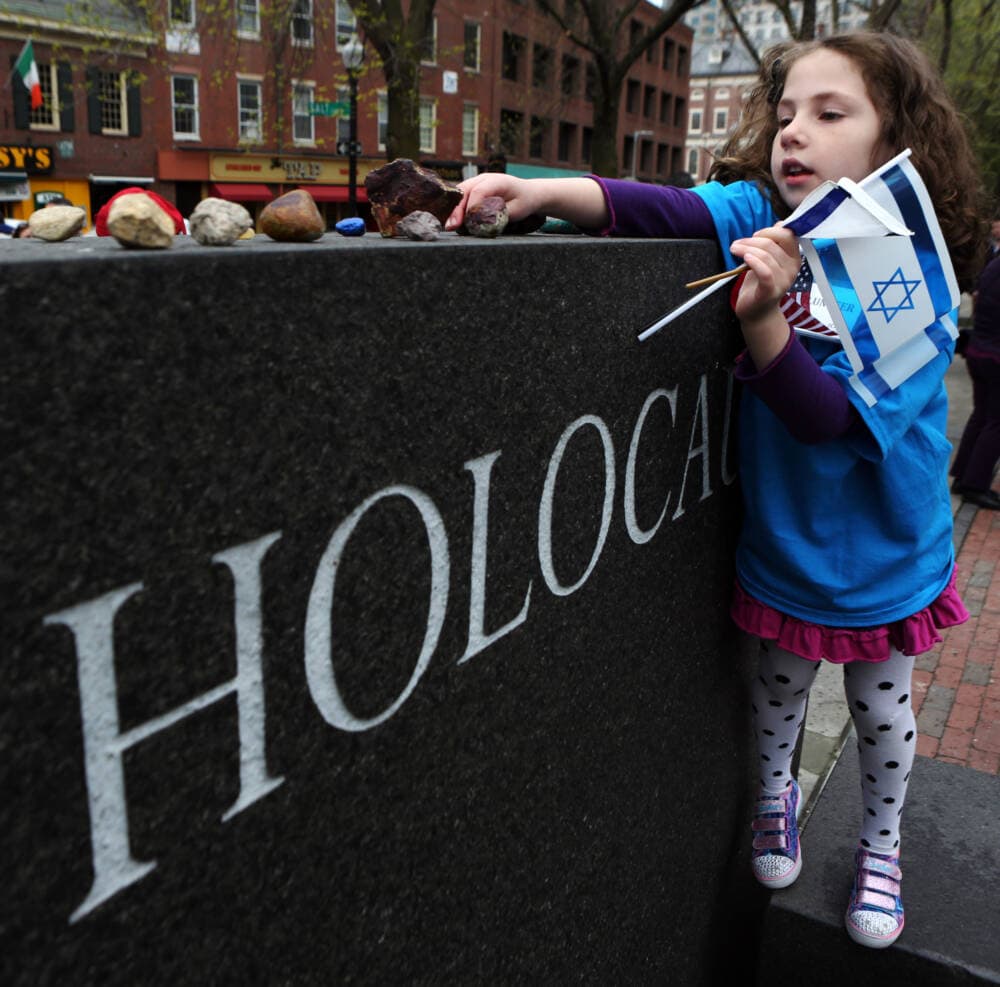Advertisement
Commentary
How will we remember the Holocaust when the survivors are gone?

Today is Yom HaShoah, Holocaust Remembrance Day, which makes us think of Holocaust survivors like Massachusetts’ own Michael Gruenbaum. When he passed away last month at the age of 92, his remarkable survival story — which included his mother sewing teddy bears for Nazi officers to keep him out of Auschwitz — went with him.
Holocaust survivors like Gruenbaum are powerful reminders of the atrocities of genocide and the gaping hole left by each of its 6 million Jewish victims. The terrifying details of their experiences evoke emotion in all who hear their stories and give credibility to the historical record of that devastating period. Yet there will soon be a time when there are no survivors left.
The average age of the more than 160,000 Holocaust survivors living in Israel is 85.5, and between 2021 and 2022, an average of 42 were dying every day. Most of the 80,000 Holocaust survivors living in the United States are more than 85 years old and that number is predicted to drop to 15,800 by 2030.
This loss is magnified by the rise of Holocaust denialism, despite the fact that the Holocaust is the most well-documented genocide in history. In the Netherlands, home of Holocaust victim Anne Frank, a survey found 23% of Dutch youth believe the Holocaust is a myth, or that the number of Jews killed has been greatly exaggerated. Holocaust symbols are being trivialized. Students carelessly carve swastikas into desks and anti-vax protesters refer to themselves as victims of persecution, while wearing yellow stars like those used to identify Jews during the Holocaust.
On days like Yom HaShoah, many wonder how the Holocaust could have happened. How could people have stood by while their neighbors were filed into cattle cars and sent to their deaths? The answer is that it didn’t happen all at once. Instead, the Holocaust occurred on the back of countless incidents of antisemitic hate, during which people looked the other way or stayed silent when they could have spoken out.
These kinds of moments are happening now, here in Boston, in our Massachusetts cities and towns, across the country, and around the globe. We can’t ignore well-documented warnings like the recently released Anti-Defamation League statistics that show antisemitic incidents in Massachusetts went up 41%, making ours the sixth worst state in the country for hate crimes. We can’t turn a deaf ear to demonstrators chanting, “Jews will not replace us.” We can’t simply delete tweets from politicians who write antisemitic tropes on Twitter and in speeches. In 2023, we cannot claim ignorance or a lack of information. We know it is happening.
How will the perpetual cycle of antisemitism end? And when the Holocaust survivors are gone, how can we honor their legacy?
We can keep telling their stories through Holocaust education. Massachusetts’ Genocide Education Act, which requires Massachusetts school districts to incorporate genocide education in both middle and high school, is a good start. Education programs like Lappin Foundation’s Holocaust Symposium are teaching students, teachers and community leaders about the dangers of antisemitism, discrimination, dehumanization and hatred.
Advertisement
We can use technology to make the stories of survivors vivid for generations to come. Among the main exhibits in the Holocaust museum, which will open on Boston’s Freedom Trail in 2025, will be an interactive hologram filmed by the USC Shoah Foundation’s Dimensions in Testimony that will enable visitors to ask questions of Holocaust Survivor David Schaecter, now 93. Schaecter, who has dedicated his life to sharing his experiences with the children of today, was our inspiration for building a Holocaust museum in Boston. Sharing through technology can be as simple as taking to TikTok, which is how Holocaust survivor Tova Friedman (with help from her grandson) brought her experiences to more than a half-million people.
Most of all, we must honor the legacy of Holocaust survivors by speaking out and acting against all forms of discrimination when we see or hear it. Every incident must be reported to the police and condemned by the media. Both Jews and non-Jews should stand up for the rights of all people and show up at peace rallies and demonstrations. Doing or saying nothing is no longer an option. Silence only normalizes these acts, which fuels aggressive action against Jews and other groups, and makes future genocides possible.
As Holocaust survivor and Nobel Peace Prize honoree Elie Wiesel said in 1986, “The opposite of love is not hate, it’s indifference.” The refrain “Never Again” should not be a call to prayer. It must be a call to action to be an upstander, rather than a bystander, not only on Yom HaShoah, but on every day of the year.
Jody Kipnis and Todd Ruderman are co-founders of Holocaust Legacy Foundation, which is building a new Holocaust museum in Boston. The museum is scheduled to open in the fall of 2025.